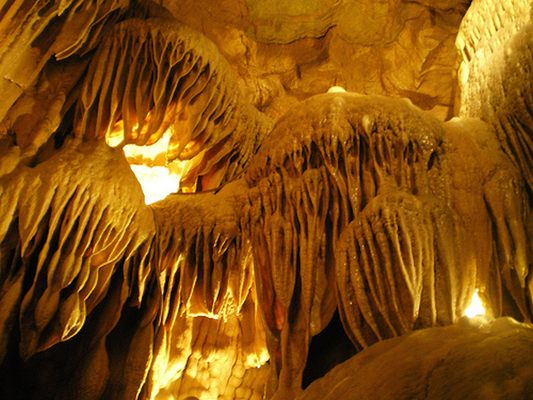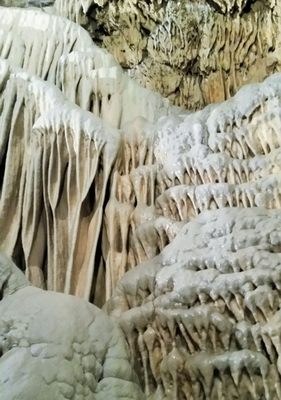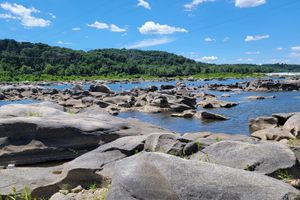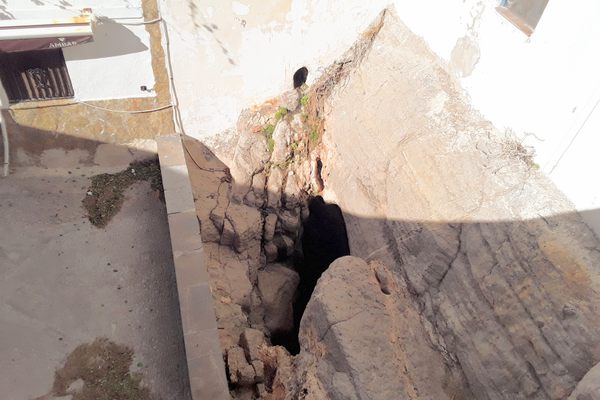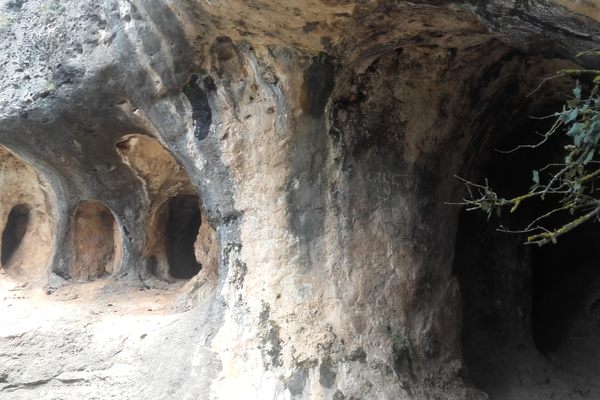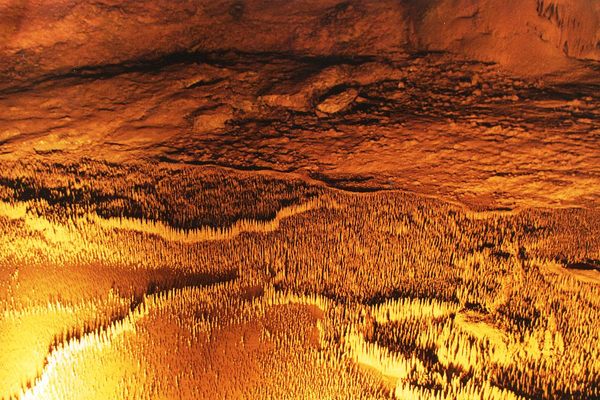About
Despite being a "show cave" with all the trappings of a tourist scene, these sparkling limestone caves in Derry Township, Pennsylvania are too gorgeous to avoid just because they're famous, and like just about anywhere, they have a story more interesting than their leaflet lets on.
On a bluff along Swatara Creek is an accessible entrance to the caverns, thought to have served as a shelter or food storage for the Susquehannock Indians, despite no real evidence of this being left behind. The natural accessibility and size of the cave makes it hard to believe it was overlooked for its usefulness, which was surely capitalized on by French fur trappers in the late 17th century, long after the Susquehannock had gone.
Another entrance just as large but not nearly as safe was sealed off sometime in the late 1920s by owner Mr. John Bieber, when commercialization got serious and safety became a legitimate concern. Bieber realized that the flow of visitors would only grow if the cavern trails and rooms were more manageable to explore, so a major effort was orchestrated to open rooms and instal pathways and staircases. The caverns fell on hard times as a site-seeing location during the Great Depression, but bounced back after World War II, and to this day they continue to delight the masses.
Or so the history goes–but the cavern's literature leaves out one former resident that is said to have made a home here, some time between the French trappers and the tourist trappers–William Wilson, the Pennsylvania Hermit.
While the story has elements of both truth and legend that are impossible to untangle, what is generally accepted as fact is that Wilson lived in the caverns for 19 years, after withdrawing from a society too painful to continue in. His tale goes something like this:
Wilson's sister, accused of murdering her children, was set to be executed. She confessed to her brother that she had been seduced and tricked by a lover, who had convinced her to meet him in the woods with the children where it was he who struck them down. With her execution delayed to allow the jury to mull over this new information, Wilson searched for this secret lover, desperate to save his sister's life.
When Wilson found the man, he predictably denied involvement, and so Wilson set upon the task of finding witnesses to back up his doomed sister's testimony. He was met with considerable success, and with his new evidence (and a serious illness that put him down for awhile during the journey) he returned to Supreme Executive Council head Benjamin Franklin, (yes, THAT Benjamin Franklin) and after some buck passing and colonial-style red tape, a pardon was granted. Wilson's joy was cut short however, by the news that during his illness, he had lost track of time, and his sister's execution was to take place the very next day.
He rode like the wind, and everyone, including the sheriff who believed in the young mother's innocence and was stalling in hopes that a pardon would arrive, held their breath. Sadly, noon came, and the sheriff could wait no longer. It's said that Wilson arrived within mere moments of his sister's last twitch in the noose. They cut her down and desperately tried to revive her, but the pardon came too late, and Wilson, despite all of his efforts, failed.
He is said to have lived the rest of his days in the Indian Echo Caverns, and an obituary of sorts was released when he was found. It read:
"Died lately at his lonely hovel among the hills, twelve miles southeast from Harrisburg, Pa., -------- Wilson, who for many years endeavored to be a solitary recluse from the society of men... His retirement was principally occasioned by the melancholy manner of the death of his sister, by which his reason was partially affected... (He) was observed frequently to be estranged, and one morning was found dead by a few of his neighbors, who had left him the evening previously in good health."
An essay entitled "The Sweets of Solitude: Instructions to Mankind How They May Be Happy in a Miserable World" was supposedly penned by him during his time in the caves, and was published after the grieving hermit left this mortal coil in 1821.
...and that is the true story that makes these shimmering limestone caves a wondrous place with a tale to tell.
The caverns gift shop also includes a display of the local legend: The Mystery Box. This box was discovered by a group of teenage boys visiting the caverns in 1919.
Upon opening this mysterious box found in the caverns, the boys discovered that it held coins and what looked like a recipe to create diamonds. They never found the owner of the box or any details of its origin
Today, the box and its contents are on display in the gift shop. Most notably, it contains coins from around the world of varying ages. Its oldest coin is believed to be from 480 BCE, and its newest coin is a Turkish coin from 1915. The box also contains chemicals and instructions for creating diamonds by harnessing lightning.
To this day, it’s unknown where the box came from or who put it in the caverns. Visitors can see the box and its contents displayed in a museum-style setup at the entrance of the gift shop. Even 100+ years since its discovery, The Mystery Box continues to draw curiosity and add to the overall intrigue surrounding the caverns.
Related Tags
Community Contributors
Published
December 11, 2015
